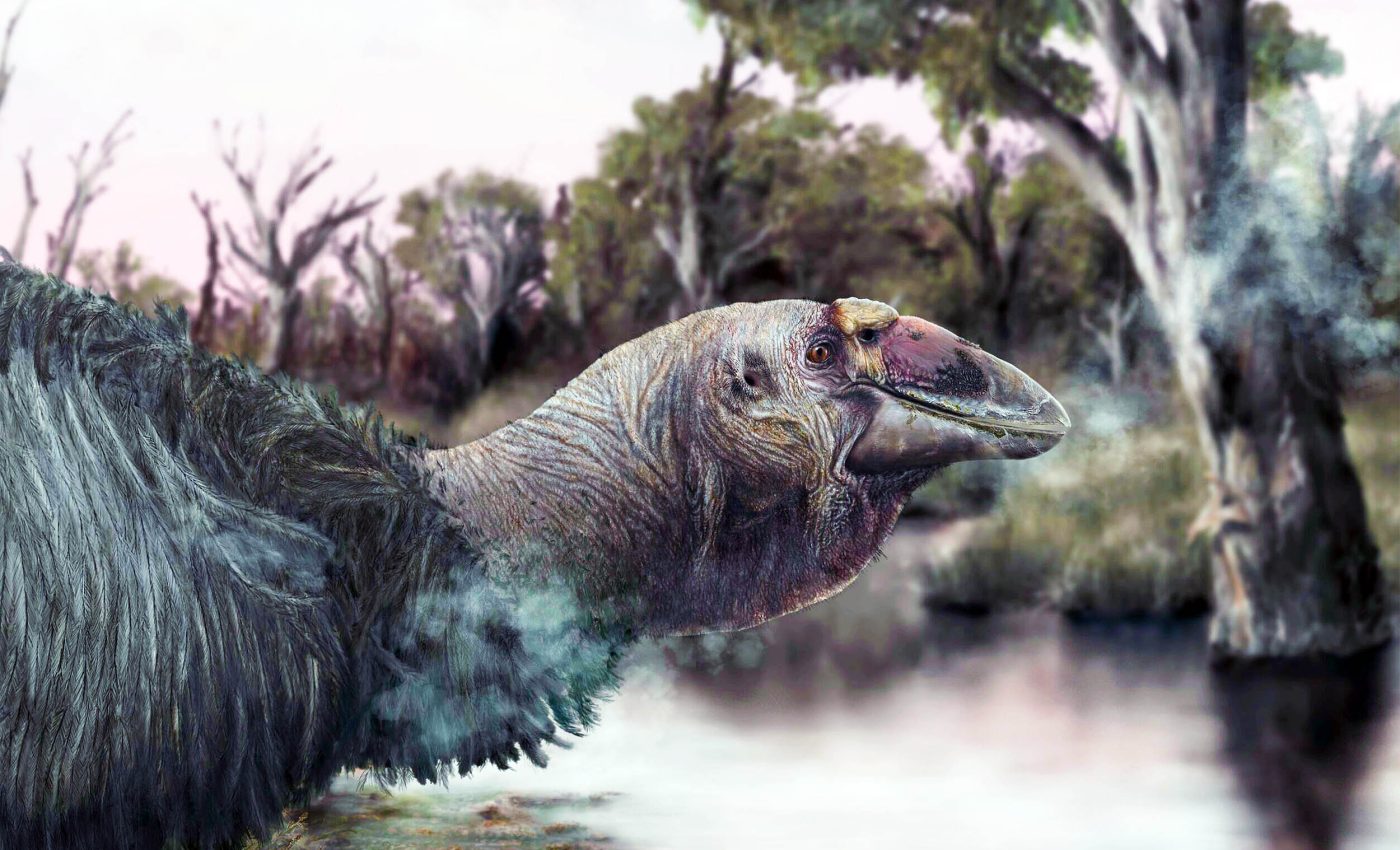
Archaeologists find rare skull of an extinct, massive 'thunder bird'
The Australian outback once shook under the footfalls of birds taller than a person and five times heavier than a cassowary. For more than a century, scientists knew these giants – called dromornithids – only from scattered and often mangled bones.
A crushed skull that turned up in 1913 led to wild guesses about how the last of the line, Genyornis newtoni, looked, fed, and sounded.
Now, freshly unearthed skull bones from the dry bed of Lake Callabonna have changed the picture in a single, definitive stroke.
The discovery rewrites ideas about where these birds fit on the avian family tree and how they made a living in Ice Age Australia. The new evidence even hints at why such a successful lineage vanished around 45,000 years ago.
Genyornis newtoni found on a lake bed
Lake Callabonna, once a shallow watering hole in South Australia’s desert interior, turned into a natural trap when drought lowered its water level and exposed slick mudflats.
Many large animals – birds included – blundered in and never made it back out. Their skeletons settled in salt-rich sediments that halted decay, building a fossil trove that rivals the La Brea Tar Pits for completeness.
Until recent field seasons, though, the site had failed to yield a Genyornis skull that could withstand careful study.
That changed in 2019 when a field team recovered a nearly complete cranium lying beside limb bones that matched the species’ telltale proportions.
Thunder bird built like a giant goose
“Genyornis newtoni had a tall and mobile upper jaw like that of a parrot but shaped like a goose, a wide gape, strong bite force, and the ability to crush soft plants and fruit on the roof of its mouth,” says Flinders University researcher Phoebe McInerney.
At roughly 230 kg – about 507 lb – the adult bird dwarfed today’s heaviest ground birds. That mass rested on thick legs that could outpace most Ice Age predators in a sprint yet showed no sign of the running specializations seen in ostriches.
Instead, the proportions resemble an oversized goose that traded wings for added muscle below the waist.
Genyornis newtoni has ties to waterfowl
Early researchers grouped dromornithids with emus and ostriches, largely because all three lost the power of flight. The new skull tells a different story.
“The exact relationships of Genyornis within this group have been difficult to unravel; however, with this new skull we have started to piece together the puzzle that shows, simply put, this species to be a giant goose,” McInerney explains.
Features in the braincase and palate echo those in modern screamers of South America and the Australian magpie goose – both considered living holdovers from deep waterfowl branches that split near the dawn of duck evolution.
Powerful bite mechanics
A parrot-like hinge between the beak tip and the rest of the skull let the upper bill lift slightly while biting, increasing leverage on tough food.
“We were particularly excited to discover the first fossil upper bill of Genyornis. For the first time we could put a face on this bird, one very different from any other bird, yet like a goose,” says co-author Dr Trevor Worthy.
Muscle scars on the lower jaw support computer models that rank the bite among the strongest ever estimated for a bird, rivaling some small theropod dinosaurs. That force was likely aimed at aquatic plants, fallen fruit, and maybe freshwater mussels.
Living by inland lakes
Lake Callabonna’s ancient shoreline held patches of reeds, stands of water-loving palms, and seasonal pools teeming with snails and small fish. Genyornis newtoni carried adaptations that make sense in such a setting.
Bony ridges around the ear opening and a curtain-like flap of bone behind the tongue would have shielded soft tissue when the bird thrust its head underwater.
Jacob Blokland, who created a digital reconstruction of the skull, notes, “Using modern birds as comparatives, we are able to put flesh back on the fossils and bring them back to life.”
The casque – a dome of solid bone on the crown – may have anchored display feathers or acted as a resonator for low calls that carried across open flats.
Freshwater oases shrank as Australia drifted north and its interior dried out. Genyornis, tied to lakes and wetlands, found itself hemmed in by spreading salt pans.
Stone-tool marks on a few bones hint that people living there around 50,000 years ago also hunted the birds.
Climate pressure, habitat loss, and human predation together may have nudged the last population over the brink by 45,000 years ago.
Why Genyornis newtoni matters today
Ice Age giants often feel remote from present-day concerns, yet their stories speak directly to modern conservation.
The new Genyornis newtoni skull shows how a species can thrive for tens of millions of years, survive continent-wide climate swings, and still succumb once key habitats disappear.
Reconstructing lost ecosystems helps scientists gauge how today’s wetlands might fare under rapid change.
The Lake Callabonna specimen closes a century-long gap in Australia’s fossil record, giving researchers the first true look at Genyornis from the neck up.
It confirms that dromornithids were titanic waterfowl, not giant emus, and reveals feeding tools as specialized as any living bird.
Above all, it reminds us that in science, patience pays: even a single skull, pulled from cracked desert clay, can flip long-held assumptions on its head – proving there is always more to learn from bones left in the earth.
The full study was published in the journal Historical Biology.
—–
Like what you read? Subscribe to our newsletter for engaging articles, exclusive content, and the latest updates.
Check us out on EarthSnap, a free app brought to you by Eric Ralls and Earth.com.
—–














